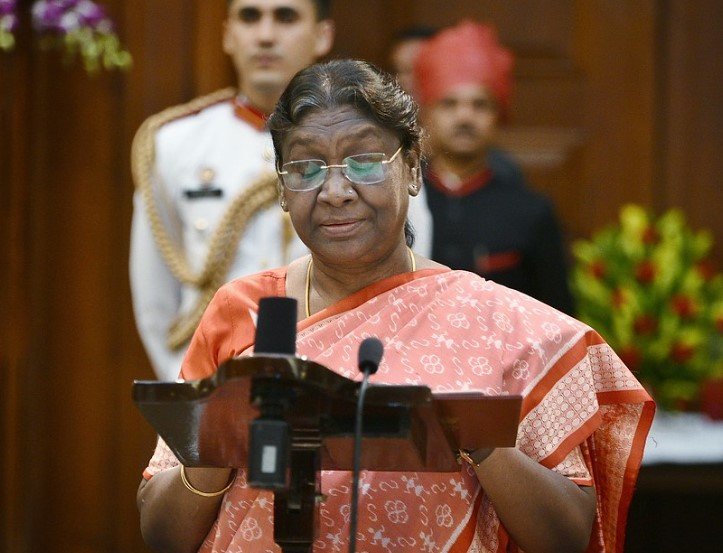President Droupadi Murmu spoke at the 120th foundation day of City Union Bank in Chennai on September 2, 2025. She stressed the need for banks to tackle digital literacy gaps and focus on empowering farmers and the rural economy to drive India’s overall progress.
In her address, Murmu highlighted how the banking sector has grown but still faces hurdles in financial awareness and technology access. She called on banks to play a bigger role in making services inclusive and supporting key areas like agriculture and small businesses.
Event Highlights from Chennai Celebration
President Murmu graced the event at City Union Bank, marking its long history since 1904. The bank, based in Tamil Nadu, has expanded its reach across India, serving millions with modern services.
During the speech, she praised the bank’s efforts in financial inclusion. This comes at a time when India’s banking sector is booming, with digital transactions hitting record highs. For instance, unified payments interface volumes crossed 14 billion in August 2025 alone, showing rapid tech adoption.
Murmu urged stakeholders to work together for better integration of underserved groups. Her words align with national goals like Digital India, which aims to connect every citizen online by 2030.
The celebration drew top leaders, adding weight to discussions on banking’s future role in economic growth.
Key Challenges in Banking Sector
Despite advances, Murmu pointed out ongoing issues in digital literacy and financial awareness. Many people in rural areas lack basic skills to use online banking tools, leading to lower participation.
Internet access remains spotty in remote regions, with only about 60 percent of India’s population online as of mid-2025. This gap hinders progress in financial inclusion programs.

She noted that banks and fintech firms have rolled out user-friendly apps and insurance for low-income groups. Yet, without education, these tools go unused.
To address this, Murmu suggested combined efforts from government, banks, and communities. Recent initiatives, like the expanded Pradhan Mantri Jan Dhan Yojana, have opened over 500 million accounts since 2014, but awareness drives are still needed.
Here are some major challenges she mentioned:
- Limited digital skills among older and rural users.
- Uneven internet coverage in villages.
- Low understanding of financial products like loans and savings plans.
Focus on Empowering Farmers and Rural Areas
Murmu emphasized that banks should prioritize farmers and the rural economy. She said this sector drives India’s growth, contributing about 18 percent to GDP in 2025.
By offering timely credit and agri-tech support, banks can make farming more profitable. This ties into recent government schemes like PM-KISAN, which provided direct income support to over 100 million farmers last year.
She highlighted how payment banks and digital wallets have reached remote villages. Banking correspondents now deliver services at doorsteps, boosting access.
In her view, empowering rural areas will create jobs and reduce poverty. Logical steps include training programs and affordable loans tailored for small farmers.
| Aspect | Current Status | Suggested Action |
|---|---|---|
| Farmer Credit Access | Over 150 million Kisan Credit Cards issued by 2025 | Expand low-interest loans with tech integration |
| Rural Banking Penetration | 70% of villages have banking outlets | Increase mobile banking education |
| Agri-Tech Adoption | 40% of farmers use digital tools | Partner with banks for app-based advisory services |
This table shows how targeted actions can bridge gaps.
Boosting MSMEs as Growth Engines
Banks can transform micro, small, and medium enterprises into key drivers of the economy, according to Murmu. MSMEs employ over 120 million people and account for 30 percent of India’s GDP.
She called for affordable credit and financial literacy programs to help these businesses scale. This is crucial amid India’s push for self-reliance through schemes like Make in India.
Recent data shows MSME lending grew by 15 percent in the first half of 2025, fueled by government guarantees. However, many owners lack knowledge on managing finances.
Murmu’s advice includes supporting innovation and exports. By doing so, banks can fuel job creation and economic stability.
Broader Impact on India’s Development
The President’s message ties into India’s fast-growing economy, projected to hit 7 percent GDP growth in 2025. Banking plays a central role in this, from urban fintech hubs to rural outreach.
Events like this highlight the sector’s evolution, especially post-pandemic, where digital banking surged. Related developments include the launch of more digital banking units nationwide.
Murmu’s call resonates with ongoing efforts to make India a developed nation by 2047. Banks must step up to ensure no one is left behind.
What do you think about these banking challenges? Share your thoughts in the comments and spread the word to raise awareness.








